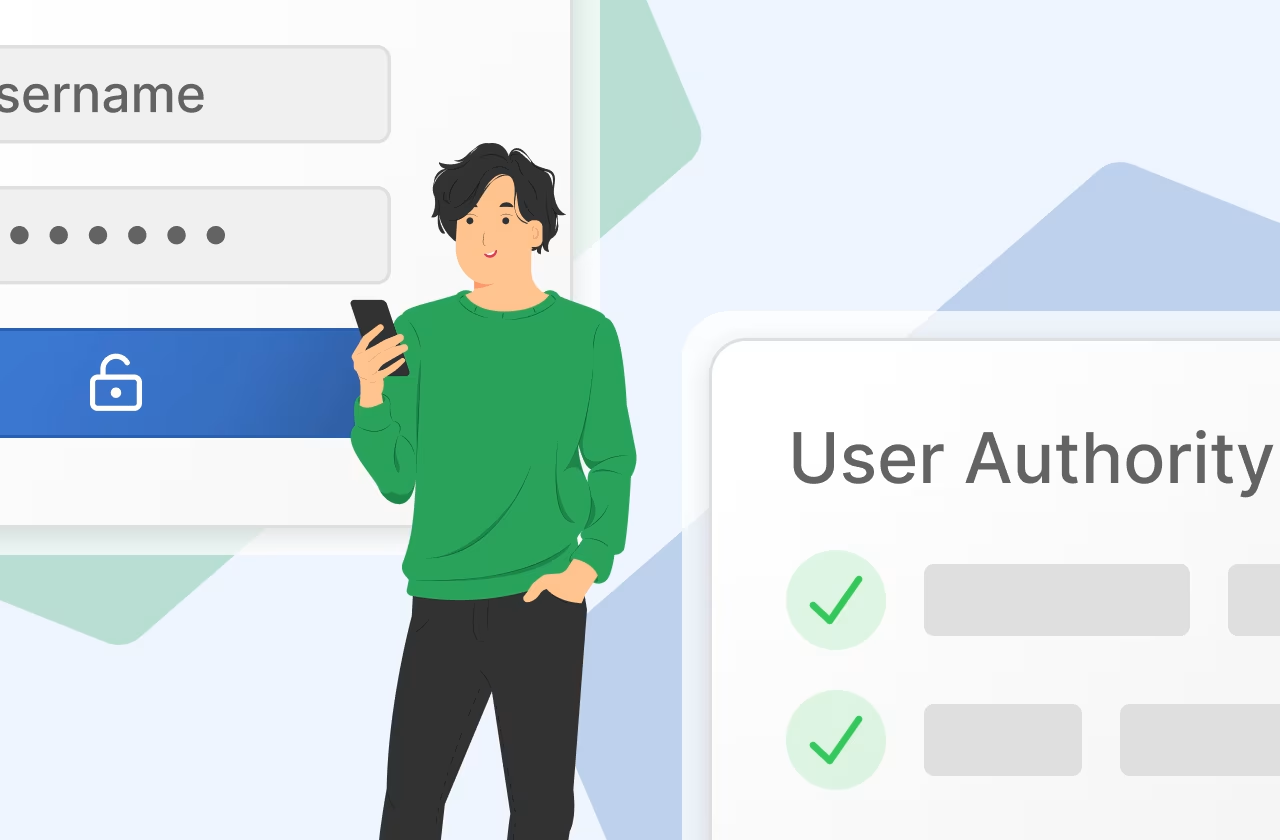Key Takeaways
According to a 2023 report by Cybersecurity Ventures, cybercrime is expected to inflict damages totaling $10.5 trillion annually by 2025, up from $3 trillion in 2015. This staggering increase highlights the urgent need for robust security measures in digital environments with either authentication or authorization.
In this article, we have detailed the difference between authentication and authorization.
What is Authentication?
Authentication is the process of verifying the identity of a user. User authentication confirms that the user is who they claim to be. This step is fundamental for securing systems and data because it prevents unauthorized users from accessing sensitive information.
How Authentication Works?
Authentication typically involves the user providing credentials, such as a username and password. More advanced methods may include multi-factor authentication (MFA), where users provide additional proof of identity, such as a fingerprint or a one-time code sent to their mobile device for OTP SMS verification.
There are more advanced means of authentication as well. These have come along to simplify the user experience and make sure that the user authentication does not become a reason for drop in the brand funnel. These methods include passwordless authentication, silent network authentication etc.
Methods of Authentication
- Passwords: The traditional method of authentication, where users provide a unique combination of characters to prove their identity.
- One-Time Passwords (OTPs): Temporary codes that are generated for a single login session, providing an additional layer of security. These are generally via SMS or WhatsApp OTPs.
- Biometrics: Utilizing physical or behavioral characteristics, such as fingerprints, facial features, or voice recognition, to authenticate users.
- Token-based Authentication: Granting access based on a physical or digital token, such as a smartcard or a software-based token.
- Single Sign-On (SSO): Allowing users to authenticate once and gain access to multiple applications or systems.
- Multi-Factor Authentication (MFA): Requiring the successful verification of two or more authentication factors to grant access is called multifactor authentication.
What is Authorization?
Authorization, on the other hand, is the process of determining what an authenticated user or entity is allowed to do or access within a system. It answers the question, "What are you allowed to do?" by evaluating the user's permissions, roles, and privileges.
Authorization ensures that users can only perform actions or access resources that they are explicitly granted access to, based on predefined policies and rules.
How Authorization Works?
Authorization policies define what authenticated users are allowed to do within a system. These policies can be based on roles, attributes, or other criteria.
Methods of Authorization?
- Discretionary Access Control (DAC): Granting permissions based on the user's identity and the access groups they belong to.
- Mandatory Access Control (MAC): Enforcing access controls at the operating system level, where permissions are defined by the system administrators.
- Role-Based Access Control (RBAC): Assigning users to specific roles, each with its own set of predefined permissions and access rights.
- Attribute-Based Access Control (ABAC): Utilizing a policy-based approach to authorization, where access is granted based on the user's attributes and the resource's attributes.

Significance of Authentication and Authorization
Both authentication and authorization are crucial components of identity and access management (IAM):
- Authentication ensures that only legitimate users can access the system, thus protecting against unauthorized access and potential breaches through methods like OTP authentication.
- Authorization ensures that users can only access resources necessary for their role, minimizing the risk of internal threats and maintaining data confidentiality.
Incorporating both processes creates a robust security framework that protects sensitive information from unauthorized access and misuse.
Integrating Authentication and Authorization in Applications
For developers, integrating authentication and authorization into applications involves using frameworks and protocols designed for securit
- OAuth: An open-standard protocol that allows users to grant third-party access to their resources without sharing credentials.
- JWT (JSON Web Tokens): Used for securely transmitting information between parties as a JSON object, typically used in authentication and authorization.
- SAML (Security Assertion Markup Language): An open standard for exchanging authentication and authorization data between parties, particularly between an identity provider and a service provider.
- OTP Based Authentication: There are multiple OTP service providers which can be used to implement OTP authentication using OTP SMS APIs.
Conclusion
Understanding the distinction between authentication and authorization is fundamental for designing secure systems. Authentication verifies user identities, while authorization defines what those users are allowed to do.
Together, they form the backbone of a secure access control system, protecting sensitive data and resources from unauthorized access and ensuring that users can only perform actions they are permitted to.
User Authentication with Message Central
Message Central is a CPaaS platform enabling communication and authentication solutions for businesses. With the platform, you can:-
- Use multichannel OTP authentication via SMS or WhatsApp
- Use the fallback mechanism for 100% deliverability of OTP for authentication
- Use advanced methods of authentication like silent network authentication or P2A authentication
You can simply signup to get started.




.avif)








